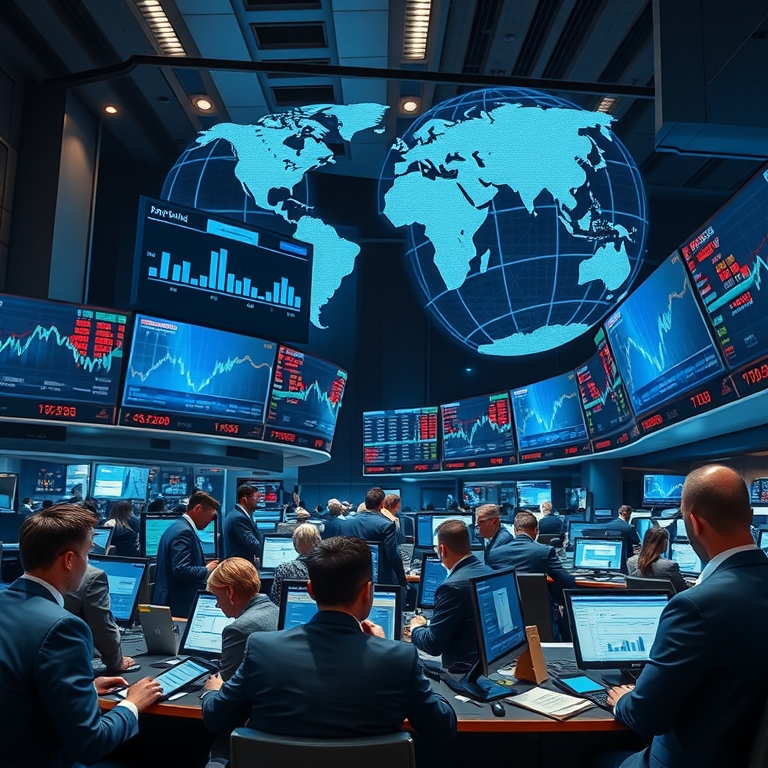The Dow Jones Industrial Average, a renowned barometer for the health of the American economy, has recently been caught in a whirlwind of fluctuations, reflecting a complex web of economic and geopolitical developments. This volatility, while unsettling for many investors, offers a unique lens through which to examine the intersecting forces that are reshaping global markets. At the heart of these fluctuations are a series of interrelated factors, each exerting its influence in unpredictable ways.
To begin with, the global economic landscape is undergoing significant transformations. The post-pandemic recovery, while initially robust, has hit several roadblocks. Supply chain disruptions, which first emerged as temporary bottlenecks, have now become more entrenched, affecting a wide range of industries from electronics to automobiles. These disruptions, coupled with labor shortages in key sectors, have fueled inflationary pressures across the globe. Central banks, including the Federal Reserve, are now grappling with the delicate task of tightening monetary policy without stifling growth. Interest rate hikes, anticipated or actual, have injected a degree of uncertainty into the markets, prompting investors to reassess their risk tolerance and shift their portfolios accordingly.
Adding to the economic challenges are geopolitical tensions that have been simmering, if not outright escalating. Trade relations between major economies remain fraught, with tariffs and sanctions periodically resurfacing as tools of diplomacy and economic leverage. The geopolitical landscape is further complicated by regional conflicts and political instability, which have the potential to disrupt global trade routes and energy supplies. In particular, tensions in Eastern Europe and the South China Sea have attracted global attention, underscoring the fragility of peace and the potential for conflict to spill over into economic realms.
In this environment, the Dow Jones, like other major indices, is reacting to an ever-changing stream of news and data. Market analysts have noted that the recent fluctuations are not merely a reflection of domestic economic concerns but are intricately linked to these broader geopolitical dynamics. The interconnectedness of global markets means that developments in one region can have ripple effects across continents, influencing investor sentiment and market performance worldwide.
The role of technology in amplifying these fluctuations cannot be understated. The rise of algorithmic trading and high-frequency trading platforms has accelerated the pace at which markets respond to news, often leading to sharp and rapid movements in stock prices. While these technologies have improved market liquidity and efficiency, they have also contributed to increased volatility, as automated systems react to headlines and data releases with split-second precision. This has created an environment where the Dow Jones can experience significant swings within the span of a single trading day, as algorithms process and respond to a constant influx of information.
Investor psychology also plays a crucial role in the current market dynamics. The post-pandemic era has seen a surge in retail investors, fueled by the accessibility of online trading platforms and the democratization of financial information. This new wave of investors, often characterized by a different risk appetite and investment horizon compared to traditional institutional investors, has added an additional layer of complexity to market behavior. The influence of social media on investor sentiment cannot be overlooked, as platforms like Twitter and Reddit have become forums where market-moving narratives are crafted and disseminated at an unprecedented speed.
Despite the challenges, there are reasons for cautious optimism. The global economy, while facing hurdles, has shown resilience and adaptability. Companies are increasingly leveraging technology and innovation to navigate supply chain disruptions and meet evolving consumer demands. In parallel, governments are implementing policies to foster economic recovery and address structural issues exposed by the pandemic. For instance, investments in infrastructure and renewable energy are gaining traction, promising long-term benefits that could help stabilize markets and drive growth.
Moreover, the current environment has underscored the importance of diversification and strategic planning for investors. Financial advisors are emphasizing the need for a balanced portfolio that can weather volatility while seeking opportunities in sectors poised for growth. As the market continues to navigate these choppy waters, the ability to adapt and make informed decisions will be crucial for investors aiming to safeguard and enhance their financial positions.
In conclusion, the recent fluctuations in the Dow Jones Industrial Average are emblematic of a world in flux, where economic and geopolitical developments are deeply intertwined. While the volatility may cause short-term unease, it also presents opportunities for those willing to engage with the complexities of the modern market. As the global landscape continues to evolve, the Dow Jones will remain a vital indicator, reflecting the challenges and opportunities that define our era. Investors, analysts, and policymakers alike will need to stay vigilant and adaptable, recognizing that in this interconnected world, agility and foresight are more valuable than ever.






